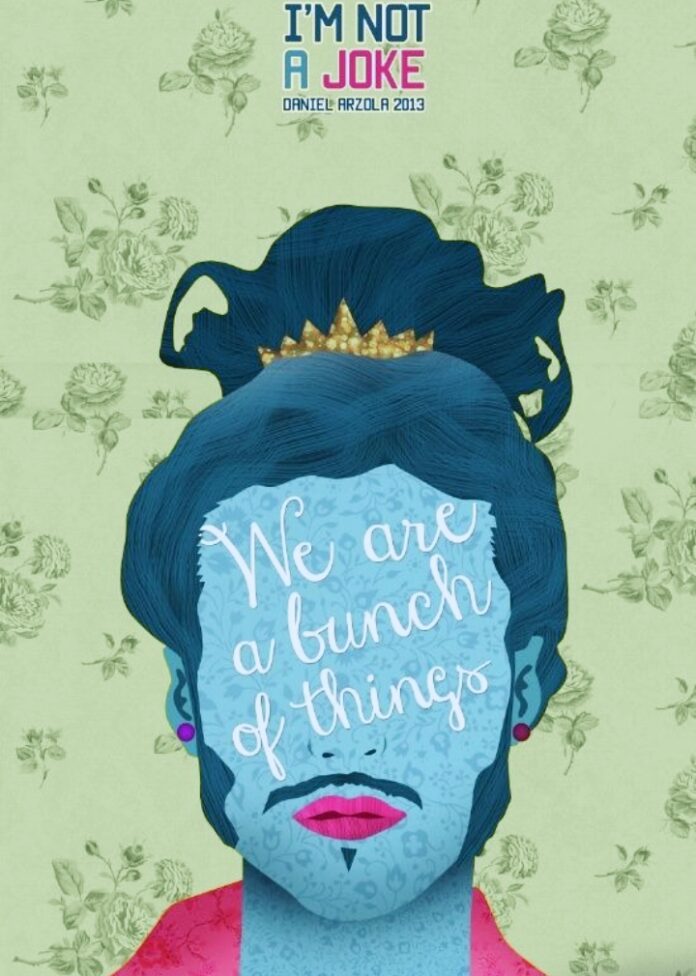Image Credit: Society6.com
“Do I Wear Blue Because I Am A Boy Or Am I Boy Because I Wear A Blue?”
Emotions… what a privilege it is for humans to communicate the most subtle feelings through emotions to those around us. Each emotional state is no less than an island in itself where myriad relatable emotions are interconnected. Euphoria is one such emotion that we all have experienced in our lives. However, the opposite of it “Dysphoria” is one such emotion that not everyone does experience. An intense state of generalized unhappiness, restlessness, dissatisfaction and frustration, Dysphoria is a bizarre mental health condition. Dysphoria is a psychological condition that is associated with mood. As such, an individual may experience fleeting moments of dysphoria or more long term dysphoric states.
Gender Dysphoria: A Bird’s Eye View
It is essential to note that gender dysphoria is NOT a mental illness. Gender dysphoria as described by the Diagnostic and Statistical Manual of Mental Disorders – 5 (DSM-5), is psychological distress that is often present in individuals whose gender identity is dissimilar from the gender that has been assigned to them since their birth. Although gender dysphoria often begins in childhood, it is not uncommon for people to experience it during or after puberty. In most cases, individuals that experience gender dysphoria will at some point or the other (with appropriate guidance and assistance), identify themselves as Transgender either internally or publically.
People that identify as such, may pursue multiple and varied domains of gender affirmation. These may include social affirmation (such as changing one’s name and pronouns); legal affirmation (like changing gender markers on one’s government-issued documents); medical affirmation (as is done through pubertal suppression or gender-affirming hormones) and/or surgical affirmation (such as vaginoplasty, facial feminization surgery, breast augmentation, masculine chest reconstruction, and so on). However, it is important to understand that the domains of affirmation that a transgender individual desire is based on highly personal and individualistic factors; as such not all transgender individuals will desire all domains of gender affirmation.

Image Credit: https://www.thesociologicalcinema.com/
HOW CAN ONE DIAGNOSE GENDER DYSPHORIA?
The DSM-5 provides specific criteria to diagnose gender dysphoria in children and adolescents and adults. For an adolescent and/or adult to be diagnosed with gender dysphoria one must experience marked incongruence between one’s experienced/expressed gender and assigned gender, lasting at least 6 months and manifested by at least two of the following criteria:
To meet the criteria for diagnosis, the condition must also be associated with clinically significant distress or impairment in social, occupational, or other important areas of functioning.
For a child to be diagnosed with gender dysphoria, one must experience a marked incongruence between one’s experienced/expressed gender and assigned gender, lasting at least 6 months and manifested by at least two of the following criteria (one of which must be the first criterion):
To meet the criteria for diagnosis, the condition must also be associated with clinically significant distress or impairment in social, occupational, or other important areas of functioning.
HOW CAN GENDER DYSPHORIA BE DEALT WITH?
When it comes to gender dysphoria, the goal is never to change how the person feels regarding their gender. Rather the goal is to deal with or enable one to deal with the distress that is experienced as a result of those feelings.
Counselling or Psychological Therapy
As such, seeking out professional help in terms of counselling or psychological therapy may be of much help. This is because, through the process of counselling, one may be able to work through feelings of discomfort and distress that come with the experience of gender dysphoria. Therapy can also help sift through the layers of emotions and enable the individual to understand and come up with a gender identity that is more resonant with how they feel about themselves. Moreover, counselling can help prepare the individual and at times the family of the said individual to deal with the challenges that one may have to face as a result of identifying in a certain way.
However, while choosing a therapist to cater to your needs it is important to bear in mind that the therapist should accept you for who you are. As mentioned earlier, the goal is never to change how the person feels about themselves. Hence, if you find that your therapist is trying to get you to conform to gender roles that you do not identify with, then it may be an indication that you need a change of therapist.
Medical Treatment
Apart from dealing with the feelings, individuals may want to do something to align their physical appearance with the way they feel. This can be done through several medical procedures, some of which have been mentioned below:
Puberty Blockers
A young person with gender dysphoria who is still experiencing early puberty may ask to be prescribed hormones (testosterone or estrogen) to suppress physical changes. However, this is usually not done without parental consent and even the individual may have to go through intense counselling and discuss the pros and cons of taking such a step.
Hormone Treatment
Teenagers and adults may take the hormones testosterone or estrogen to develop the physical traits of the sex that they identify with. This again is seldom done without deep thought and thorough discussions about the consequences of such a choice.
Surgery
Some people choose to go for complete sex-reassignment surgery. While others may not change their sex completely, but go through only certain surgical procedures to get their physical appearance more in line with the sex that they identify with.
IS IT JUST A PASSING PHASE OR SOMETHING SERIOUS?
Ironically, there is no foolproof way of identifying it for sure. As such, it is not necessary that if someone feels dissatisfied with their gender at some point then they will feel that way throughout their lives. But just because this is a possibility, one cannot rule out the importance of the experience of gender dysphoria.
THE BOTTOM LINE
Therefore, if you are close to someone who is experiencing gender dysphoria, the best thing you can do for them is to create a safe space for them to explore themselves. Give the individual the liberty to find who they are, while being attentive enough to sense when professional intervention might be needed. It is also essential to remember that someone who experiences gender dysphoria did not choose to have those feelings, and as such, they need all the assistance and support that they can get.
“I hadn’t been happy in so long. I’ve been sad again since, but it’s a totally different take on sad. There’s just some magic in truth and honesty and openness.”


